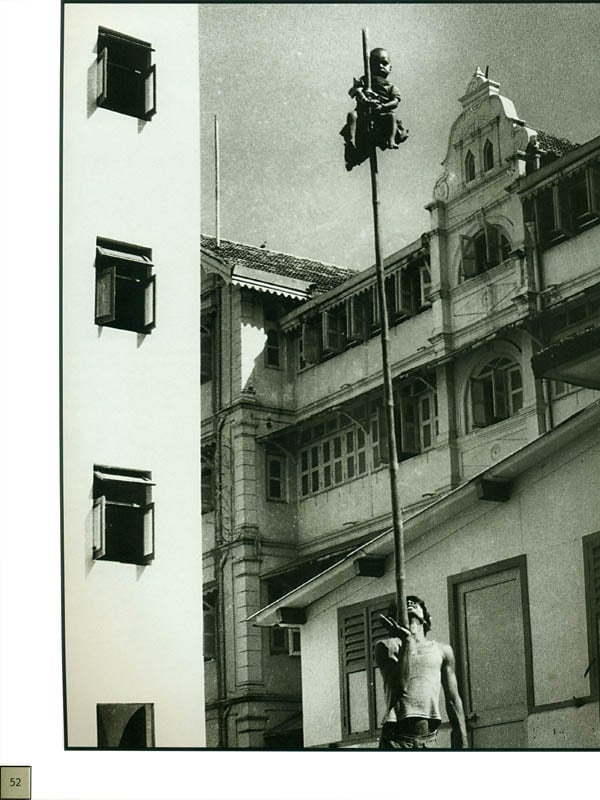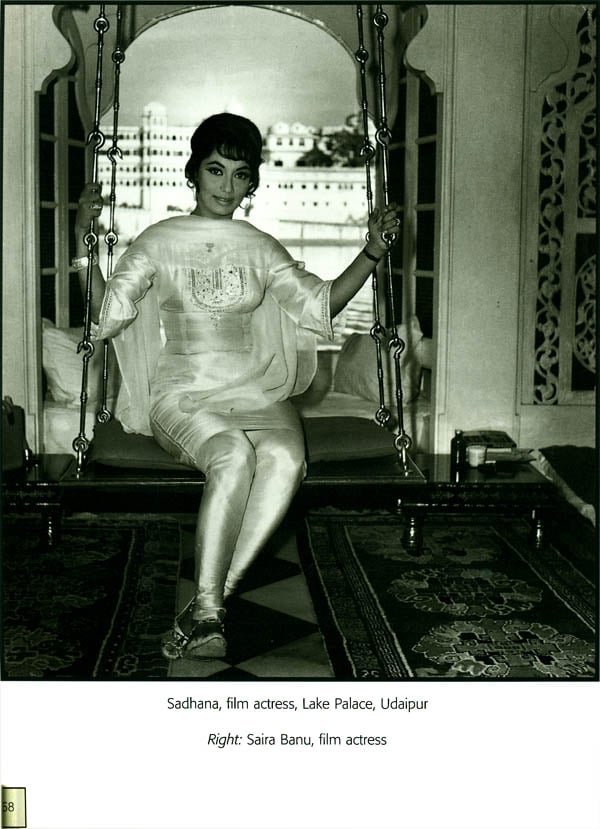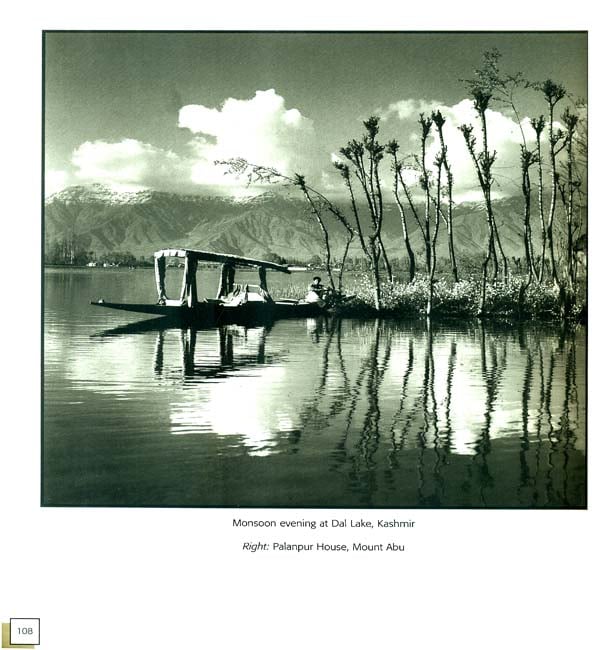
Vision from The Inner Eye (The Photographic Art of A L Syed)
Book Specification
| Item Code: | NAK163 |
| Author: | O P Sharma |
| Publisher: | Mapin Publishing Pvt. Ltd. |
| Language: | English |
| Edition: | 2001 |
| ISBN: | 9781890206284 |
| Pages: | 111 (Throughout B/W Illustrations) |
| Cover: | Paperback |
| Other Details | 11.0 inch x 9.0 inch |
| Weight | 330 gm |
Book Description
This book is a tribute to Adid Mian Lal Mian Syed (known as A L Syed)- the man and his work. His exceptional technical skill and artistic eye, in a career spanning 70 years, produced hundreds of striking images that are a treasure of Indian photographic heritage.
He first gained a reputation as the most loved official state photographer for the royal families of palanpur in Gujarat and other princely states of Indian in the 1920s. he accompanied the Nawab of Palanpur in his travels around the country and from 1940 to 1975 he lived with him in Bombay.
With his favourite Rolleicord camera ever near, A L Syed was alert at all times in expectation of finding an image to capture with his lens. He thus had an unlimited range of subjects, from wildlife to landscapes to architecture to day to day life. His work has a contemporary quality, as he looked at everything from a unique persective. With compositions are like works of abstract art.
His most famous photograph, Traveller of the East First brought him international acclaim when it won the Popular Photography award in 1935. For more than 50 years his work appeared in many national and international publications, including National
Geographic, and won numerous contests, competitions and award. He became well known amongst his peers and inspired many young photographers to attempt to achieve his height.
O P Sharma is a highly giftend esteemed photographic artist and is internationally well – known in his field. He is Founder Honorary General Secretary of the India International Photographic Society, UK; Fellow of the Royal Society of Arts, UK; and Honorary Member and Fellow of the Photographic Society of America (PSA). He is also a country representative of PSA in India.
He has won over 500 awards in national and international exhibitions and contests, including: the Grand Prize of the Saturday Review, USA; the Pentax Award, Japan; the Kodak International Contest; the Asia '72 National Award of Government of India; the Merilon Award of the Singapore Photographic Society; and the Stuvysent Peabody Memorial Award of PSA. In 1970 he represented India in the 100 photo Master of the World in the former USSR.
His works are in the collection of museums in the USA Brazil And Australia.
I feel proud and privileged to have been requested by Azmatbhai to write the text for this unique book on his father, one of the most important personalities in the world of Indian photography of this century, the late janab A L Syed.
To sum up a lifetime of word in just a few pages seems like an impossible task. In my humble way I have tried to pay my respects to the grand old master of the photographic would. I hope those who knew him and his work will forgive me if I have omitted any phase of his life of his work that should have been included.
It is very unfortunate that many negatives of his unforgettable pictures are either in a deteriorated condition or untraceable. The royal families themselves and collectors abroad, especially after Independence, have acquired much of the work he and his brother K. L. Syed Produced during the princely era in pre-Independence India. Similarly, his work in the film world has become the property of the Producers. Hence out of necessity a number of pictures in this book have been reproduced from copy negatives which do not match the quality of the original.
Words are not enough to describe Janab A L Syed's photographic achievements, his aesthetic sense, technical excellence keen vision, sense of composition and compete mastery over the medium. We only wish that this book had been published when he was in the prime of his photographic career. It would have brought happiness to a soul who devoted his entire life to the art of photography and its advancement.
We hope that this book will provide some insights to the younger generation of aspiring photographers about his significant contribution to the world of Photography.
The period preceding Independence in India is Known as the princely era, as Maharajas, Nawabs are princes ruled various independent states. During this time, many of the early photographers ran studios for portraiture and for covering social and other functions help by royalty. Although the number of photographers gradually increased, very few had the passion and flair for photography which A L Syed possessed. He built a 70 year career on the magical combination of an artist's eye and the technical skill necessary to compose affecting images. He will always be remembered for this exceptional skill and his lifelong sincere devotion to photography.
Abid mian Lal Mian Syed (A L Syed ) was born in 1904 in Varnawada, a small village in Banaskantha district Gujarat, and he spent his childhood in nearby Palanpur. His father Janab Lal Mian Syed was a well Known Unani hakim and a courtier of the late Nawab table Mohamed khan of Palanpur.
A L Syed studied in the Government high school but did not perform well academically. His father wanted him to be a hakim like himself but his destiny lay elsewhere. At the age 15, he started working with his elder brother Janab khanji Mian Lal Mian Syed (K L Syed), who was already a well – know freelance photographer in Palanpur, particularly for portraiture.
In 1923 on a trip to Bombay to clear his matriculation examination, he took a photograph of the sunrise at Chowpaty, which won him first prize in The Illustrated Weekly of India photo Contest. This decisive experience hooked young Abid as a photographer.
In course of time under his brother's guidance and loving care, A L Syed joined him as official photographer of palanpur state. Through their association with the royal family, their reputation grew and they were often requested to photograph royal families of other states: Baroda and Saurashtra (in what is now Gujarat), Bikaner, Kotah, Jodhpur, Udaipur, Bundi, and Saurashtra (in what is now Gujarat), Bikaner, Kotah, Jodhpur, Udaipur, Bundi, Dungarpur and Narisinghgarh (in what is now Rajasthan), Madhya Pradesh and Kashmir.
A L Syed came to be one of the most loved state photographers for his superior skill, manners and professionalism. He was a charming young man whose enthusiasm and humility earned him great respect. Among royalty he was always treated as member of the family and had unusually close proximity to the family members, including the women who were traditionally in purdah. He took innumerable photographs with his unique flair and style, which are now considered to be Historical documentation of the pomp and pageantry of Royal living, especially hunting expeditions, weddings and other functions.
In 1946 A L Syed accompanied the Nawab of Palanpur when he moved to Bombay, and he lived and worked there until 1975, travelling back and forth to Palanpur every month to see his wife and Children.
Unlike his brother who restricted himself to state photography, from his early days A L Syed was determined to take excellent photographs wherever and whenever possible. During his travels around the country, both on official assignments with the Nawabs as well as independently, he was always alert and aware of his surroundings. In fact, while spending time with him, one often felt that his Zeal to discover the potential photograph consumed a great deal of his attention. He had an uncanny knack of spotting his subject; his eyes, mind and fingers worked in perfect synchronisation to instantly capture remarkable images through his lens. He always said that opportunities in photography never wait for anyone and the one who is armed at all times gets home with a camera full of good pictures.
He however did not wait to go home to develop the exposures. Instead he would rush to the nearest photo lab. His product proved that he never missed the moment and always produced astonishing results. Propelled by the desire to see his photographs in print, he would approach various publication all of which were thrilled to publish his work.
In 1925 his images first began to appear regularly in Kumar, a monthly Gujarati magazine edited by the great artist Ravi Shankar Raval. A L Syed also wrote Monthly feature articles on the subject of photography to accompany his photographs, which continued until the magazine ceased publication in 1940. From 1930 to 1980 his work also appeared regularly in the illustrated weekly of India. Eventually he became the only photographer who could justly claim that there was no publication in India that had not published his photographs.
Around 1930 he also stared exhibiting his photographs in salons and other national and international exhibitions and competitions. He was the first Indian to dramatically gatecrash into the international secene when his famous photograph traveller to East was published in the World's Best Photographs complied by Odhams Press. This haunting picture was exhibited in over 40 international salons and won the popular Photography award in 1935 and later was purchased for the famous Hutchinson collection in the USA.









